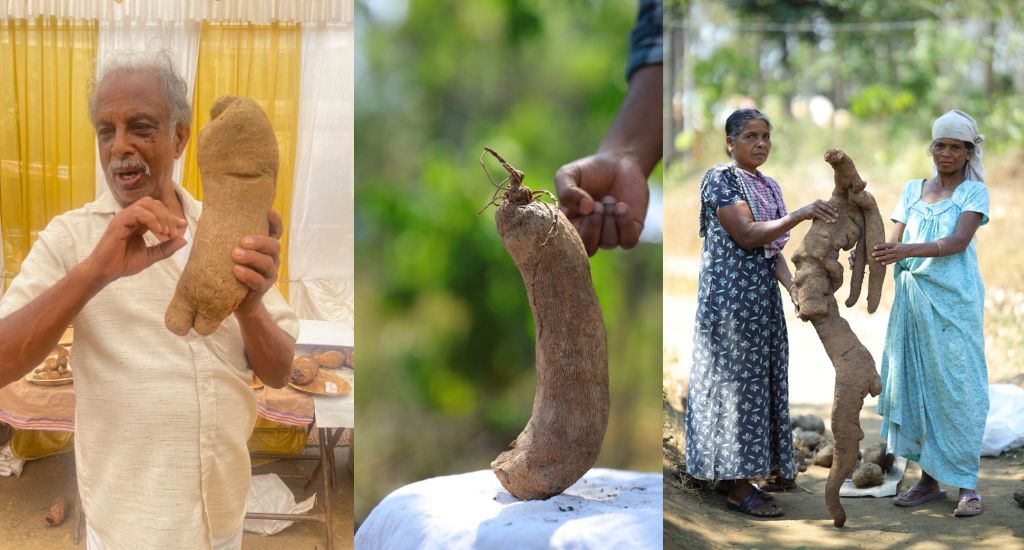
130 varieties and counting: Kerala taps tubers
Cassava, elephant foot yam, taro, arrowroot… Tubers that almost disappeared from the regular diet in Wayanad, Kerala, are now being brought back to the farms as nutritious and climate resilient crops.

Cassava, elephant foot yam, taro, arrowroot… Tubers that almost disappeared from the regular diet in Wayanad, Kerala, are now being brought back to the farms as nutritious and climate resilient crops.
“It may come as a surprise but the humble tubers changed my life,” said Manuel Pallikiamialil, a 75-year-old tuber conservationist from Wayanad in Kerala.
His family members were small scale farmers. In the late 1930s many families including his migrated from the Idduki region to Wayanad in need of more land to cultivate to escape famine and poverty.
“The tubers helped us satisfy hunger during my childhood in times of extreme poverty. Pulling out tubers, boiling and eating them after we returned from school was an everyday task,” said Pallikiamialil.
So it’s not surprising that when the Kerala State Biodiversity Board started conservation of tubers, Pallikiamialil became a field researcher with the board. He then began conserving tubers – the thick, starchy storage stem of certain plants that typically grows below the soil – of various kinds and forms and became a specialist in the field.
With many farmers and agencies involved, tuber conservation is now a growing phenomenon in Wayanad.
With changing land use and climatic fluctuations, there is a decrease in the land and water availability for cultivation of cereals and pulses.
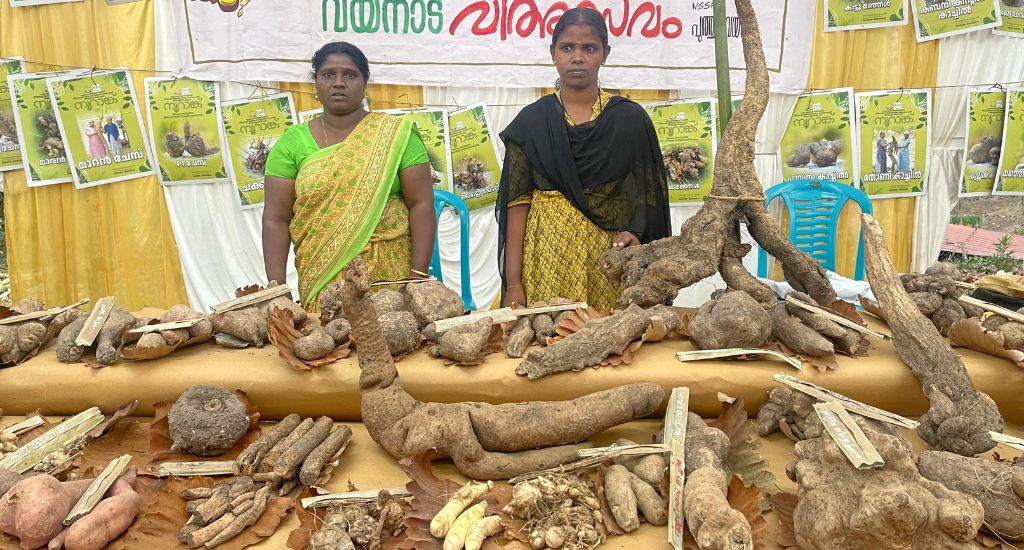
“There’s a need to adapt to changes in climate, and at the same time ensure that every farmer is able to grow the right crops that can protect and improve the environment,” said Pallikiamialil. “Tubers are climate resilient and also rich in Vitamin C and beta carotene.”
The yield of paddy is 3 tonnes from 1 hectare per year. But in the same area, tapioca yield is about 25 tonnes, while about 30 tonnes and 15-20 tonnes of yam and sweet potatoes, respectively, are harvested every five months.
Also Read | Kerala’s cash crops face the heat of climate change
In small farms where cereals, vegetables, pulses like cowpea and black gram, and oilseeds like groundnuts are grown, tuber crops enable higher employment and income.
“Since tubers were a major part of our meal in my childhood, I appreciate tubers in a special way. I savour and conserve every tuber since it has the potential of being a meal in itself,” said Pallikiamialil. “And I consider it important for ensuring food security.”
Now, the state government with support from NRLM and Kudumbashree (a rural development agency) is working towards conservation of tuber diversity to ensure nutritional security among tribal groups in Thriunelly, Wayanad.
Wayanad district in Kerala has the largest population of eight recognised tribes and remains one of the poorest districts in the state.
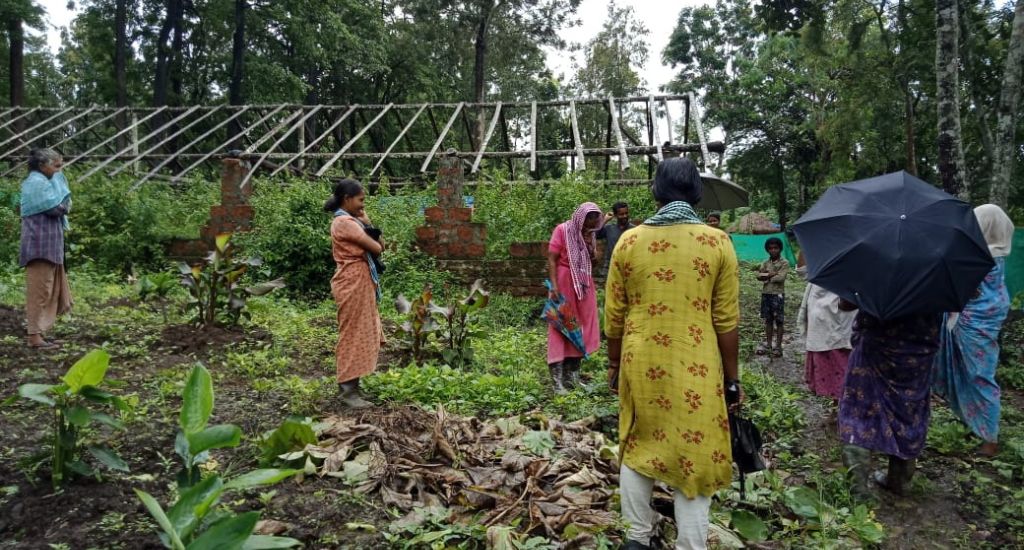
“We were losing children to malnourishment in Attapadi in Palakkad region. It was more than the average in the state, with a study showing 22.5 percent underweight , 31.3 percent stunted and 16.1 percent wasting among under five years old,” said T.V. Saikrishnan, the coordinator of the Thirunelly Tribal Comprehensive Development Project. “So a comprehensive tribal development project was set up in Thirunelly with an aim to provide nutrition to pregnant and lactating mothers.”
With a focus on the welfare of women and children, community kitchens were set up. Lands were leased and each parcel was divided for paddy, banana, tubers and other vegetables and given to the tribal community to support themselves. Groups were formed for development of these lands.
Also Read | Community kitchens help tribal children overcome malnutrition
A survey conducted by Integrated Child Development Services in Wayanad indicated a marked improvement in malnourished children in Thirunelly, showing how tubers can play a role in nutritional security.
Intercropping roots and tubers among plantation and fruit crops works best, Pallikiamialil said.
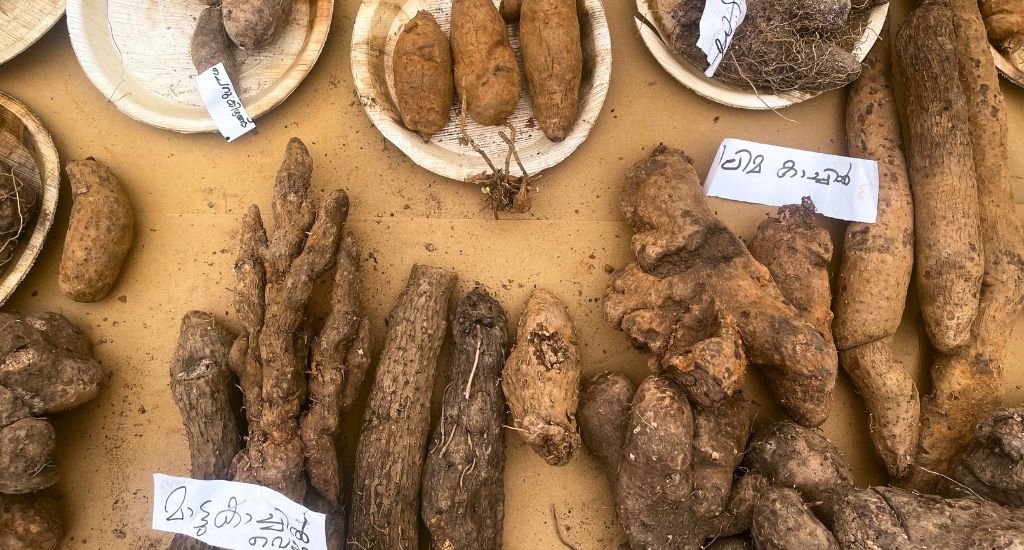
Tubers can be grown as intercrop in different phases of the perennial crops. The choice of tuber crops for intercropping in the coconut garden is determined by the age of the coconut palms. In areca nut farms, cassava, elephant foot yam, larger yam, sweet potato, taro, and arrowroot can be grown successfully.
Also Read | Arecanut goes from yucky paan stains to dandy dye
Elephant foot yam is a perfect intercrop for robusta coffee, mango, sapota and litchi orchards, while it is is productive and profitable to grow elephant foot yam, larger yam and white yam between nendran and robusta banana, according to Pallikiamialil.
In rubber plantations, during the initial 3-4 years, elephant foot yams can be intercropped. Sweet potato can be intercropped with cereals and pulses.
“Intercrops serve as an insurance crop against risks and natural calamities and enhance the efficiency of resource use,” Pallikiamialil said. “For example, sweet potato can be planted after harvesting rice, to take advantage of the residual soil moisture and fertilisers.”
Tribal communities were dependent on tubers for a long time but the crop was getting neglected due to changing food preferences and the supply of rice through the public distribution system. Also, they were used to foraging for tubers from the forests, and did not know how to cultivate them.
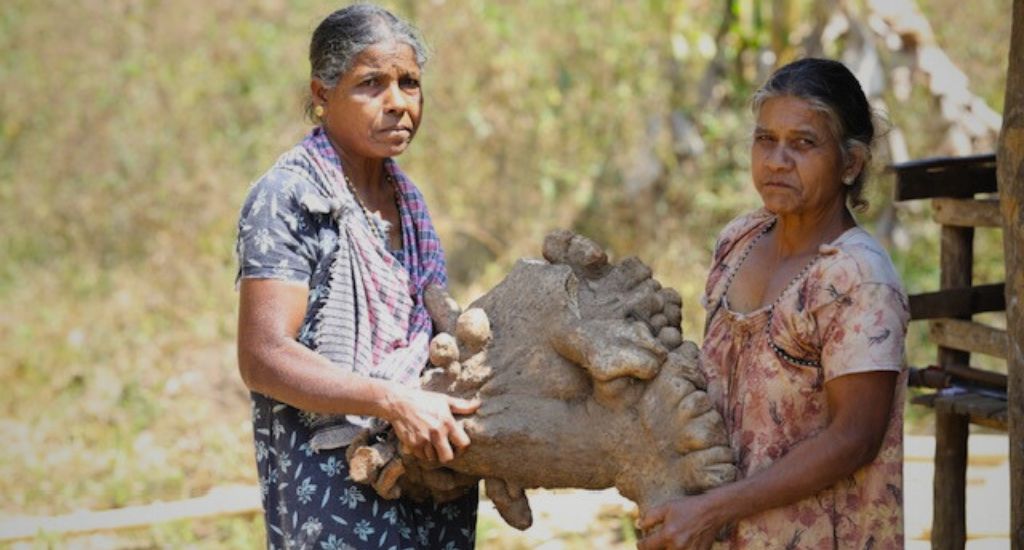
Now they are being taught how to grow these crops, prepare land for each tuber variety, and how to save seeds and protect them.
Also Read | Black goats of Kerala’s native tribal hill people on brink of extinction
Farmers like Pallikiamialil conserve tubers and share them with farmers who wish to cultivate them. Last year he provided tubers to 17 conservation groups. One of them is Noorang – a group of 10 women belonging to the Vetta Kurumba tribe in Thirunelly that used to have tubers as a permanent part of their diet earlier.
As part of their conservation work, they grew 130 varieties of tubers in one season. Noorang is also promoting rare varieties of tubers such as nooran kizhangu.
“Noorang has participated in three seed fairs in the past three months, one year after the project was started, during which they achieved sales worth Rs 50,000 with the minimal produce they had,” said Saikrishna. “The Central Tuber Crops Research Institute at Sreekaryam in Kerala has also promised specialised training. We are trying to bring about value addition so that this becomes a sustainable livelihood for the women at Noorang.”
Similarly, the Thirunelly project plans to document the tubers, their characters and peculiarities.
Also Read | Community sows seeds of conservation, saves rare endemic trees
“We need more comprehensive research on farming systems involving tuber crops and development of profitable tuber-based enterprises, and studies on carbon sequestrations in root and tuber crops,” said Pallikiamialil.
The lead image shows (from left) farmer and tuber conservationist Manuel Pallikiamialil talking about his endeavour; members of the Noorang group displaying some tubers harvested (Photo courtesy Lakshmi Unnithan)
Lakshmi Unnithan is a Bengaluru-based sustainability expert and holds a doctorate in horticulture.